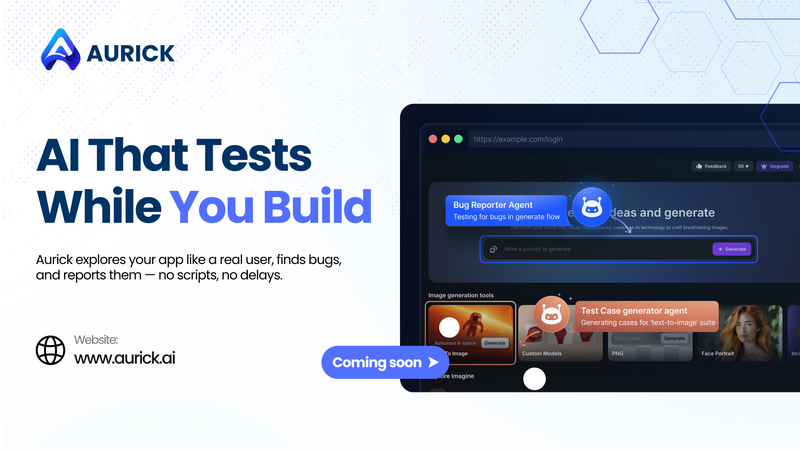Software is getting faster. Testing isn’t.
We're living in a glow-up era for software development. AI-powered tools like GitHub Copilot, Cursor, and Bolt are rewriting the rules — literally. Developers can now spin up entire features from plain-English prompts, sometimes generating full components in seconds.
According to GII Research, AI wrote nearly 41% of all code by the end of 2024 — roughly 256 billion lines. These tools aren’t just autocomplete on steroids — they’re automating repetitive logic, improving code quality, and compressing timelines. One developer put it plainly: “You can build a whole UI from a sentence.” That’s not hype. That’s now.
The result? Even non-technical founders can deploy working prototypes in minutes. Development is fast. Clean. Intuitive. It's vibe coding.
But there's one problem: testing hasn’t caught up.
While AI copilots write code faster than ever, QA still feels stuck in 2013.
Let’s be real. Here’s how most teams still handle testing:
- Manual runs before each release
- Brittle Selenium scripts that fail with tiny UI changes
- Flaky E2E tests with zero trust
- QA engineers overloaded (or worse — missing entirely)
As one tester put it:
“If one tiny UI change happens, your whole test suite explodes.”
Sound familiar?
That outdated approach comes at a cost — slower cycles, missed regressions, and devs debugging test failures instead of shipping features. In fact, QA is estimated to eat up 20–40% of a project’s timeline, according to Intersog. When your dev team can deploy in minutes, but QA still takes hours or days, testing becomes the last bottleneck.
QA Is the New Bottleneck — But AI Might Fix It
Here’s where things get interesting: the same AI breakthroughs powering coding copilots can now be applied to testing.
Recent advancements in agent frameworks and vision-based models are enabling something radically new: autonomous QA engineers. These models can “see” your app like a user, navigate flows like a human tester, and even generate test cases on the fly — no scripts, no setup, no flaky selectors.
Imagine this:
You paste your app’s staging URL into a dashboard.
The AI clicks through every button, fills every form, logs every interaction.
If something’s broken, it flags it.
If a modal doesn’t load, it records it.
If a bug happens, it files a report — with screenshots and logs.
All of that, without a single test case written by you.
This is not theory. It’s already happening.
Meet Aurick: The Autonomous AI QA Engineer
Aurick is part of this new wave. It’s designed to function like a tireless, invisible QA teammate — exploring your app, understanding your user flows, executing tests, and surfacing bugs in real time.
According to its creators, Aurick:
“Explores your product, understands user flows, runs tests live, and gives you clear bug reports with logs, screenshots, and breakdowns — all without writing any test code.”
In early testing runs, teams reported cutting down QA time by up to 80%, all while maintaining — and sometimes improving — coverage.
Testing Can Finally Move as Fast as Code
The truth is, dev tools only win when they disappear into your flow. They “just work.” QA hasn't felt like that in years. It’s heavy. Rigid. Slow.
But with autonomous QA, testing can finally feel as lightweight and fast as deployment.
As noted in the CodeNewbie community, the shift is overdue. And with AI-powered QA, we’re not talking about a marginal upgrade — we’re talking about removing an entire class of effort from the workflow.
TL;DR
- AI now writes nearly half the world’s code.
- But testing? Still stuck in a manual, script-heavy rut.
- QA eats 20–40% of your timeline — and breaks easily.
- Agent-based AI can now test apps like humans: click, explore, validate.
- Tools like Aurick are leading the charge toward truly autonomous QA.
Final Thought
“Vibe coding” is real. It’s time for “vibe testing” to catch up.
If your dev team can ship in 10 minutes, your QA process shouldn’t take 10 hours. The future of testing is autonomous, adaptive, and invisible — and if your QA tool doesn’t move like your code does, it’s time to switch.




Top comments (0)